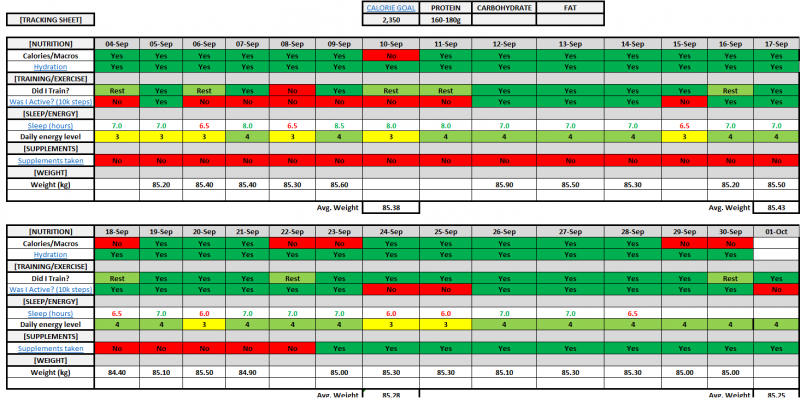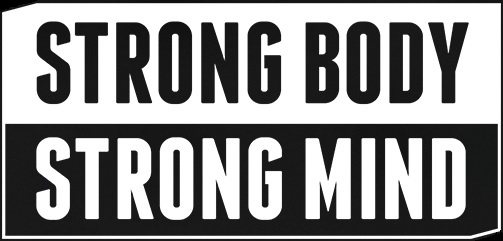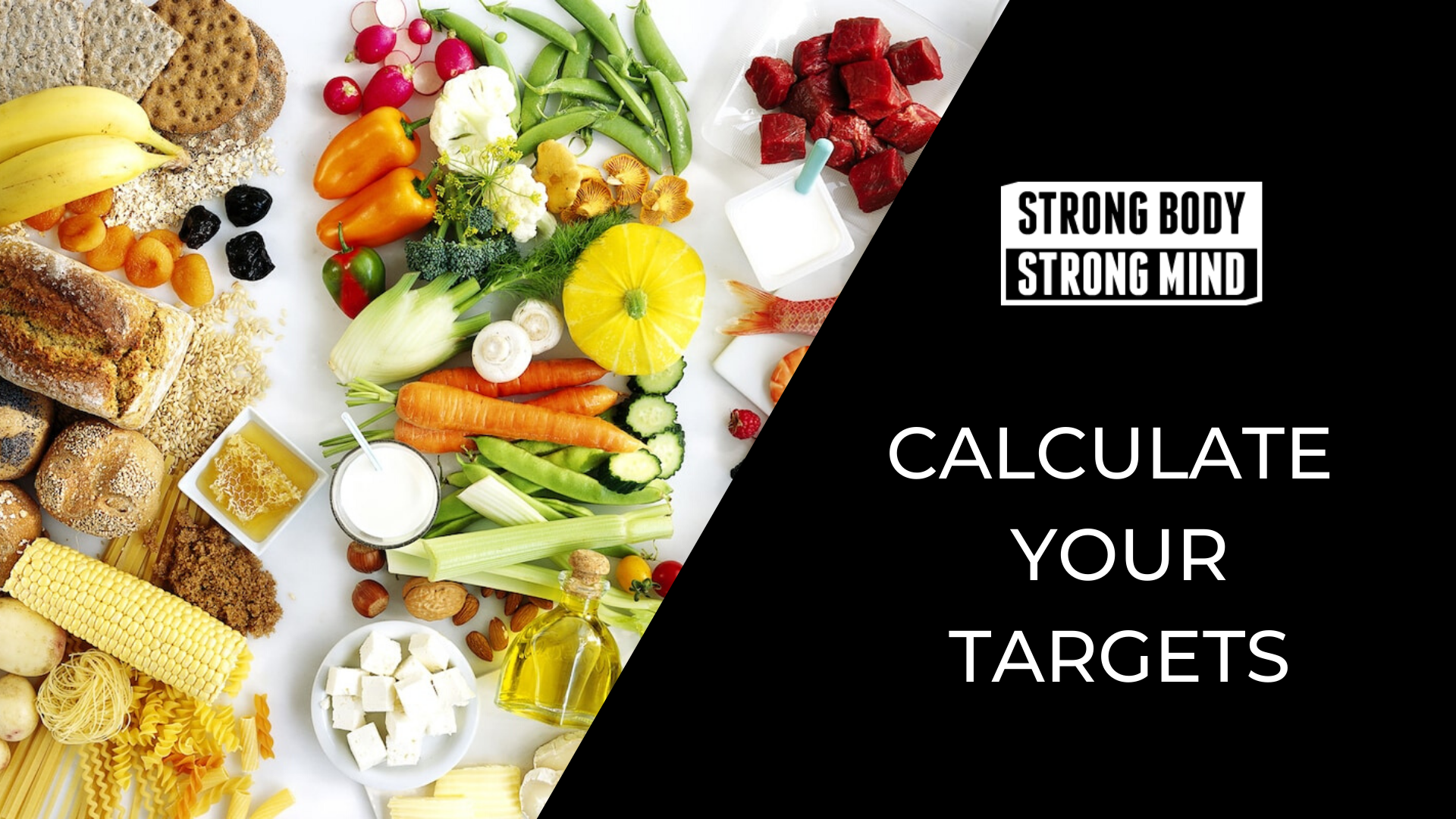Learning about Energy Balance.
We have learned that energy balance is the single biggest physiological factor when it comes to losing weight. You take in calories through food and you expend calories through living, breathing, exercising, and basically performing any kind of work.
If there is a mismatch over time it will affect your weight – too much energy will get stored as fat, too little and the body will look to fat stores to provide the missing energy needed. It’s not a simple on/off switch, but that is the principle that underpins it all.
I firmly believe every single person needs to spend a period of time tracking their food and learning about the energy value of it. If you feel like it is too difficult at this point in time that's no problem, there is an alternative.
However, to really learn about food I believe accounting for energy is so important. Nobody needs to track calories forever, but everybody should learn.
Food affects how you look, how you feel, and it plays a big role in health as well. In terms of your time on this planet, and of longevity, you owe to yourself to do it purely from health and a quality of life perspective. Many of the non-communicable diseases like cardiovascular disease, diabetes and obesity are heavily linked to over-consumption.
Learn about food and eat well to help you live well for a long time.
If you’ve got kids, or you plan on having kids, I also think you owe it to them to know this stuff. They rely on you for everything.
If a child becomes overweight or obese the road back can be long and it will have a negative impact on their life further down the line.
Parenting is extremely tough. I hope the knowledge I provide helps your family in some way too.
Everything Worth Doing Takes Time.
This is like learning a language and that’s not done in a single day, or a week.
It will take time, nothing happens over night but just be glad you are on the path to taking control of your nutrition and in turn your body composition and health.
If you are trying to learn a language from scratch you do it word by word, and eventually you put sentences together and with a long enough time spent doing it you become fluent. You don’t try and write your first novel on day one.
How this applies to food is that you can’t figure out the calorie total to everything straight away. You’ll learn about different foods as you go – what is really high calorie, what’s low calorie, what’s in the middle, what high protein food you love is great to have in your habitual diet. Things won’t be perfect from the start but don’t panic about that, there should be no stress attached to the process.
Don’t worry about having to make huge changes either. You eat a certain amount of food every day already – you’re probably not far off what you need to do, or you might just need to remove 1 or 2 high calorie foods that were causing the problem.
Everything worth doing takes time to master, just be happy you won’t have to waste any from now on following incorrect methods and advice.
The Time Scale Is Important.
You will soon see that you can create a calorie deficit but for it to be sustainable it can only be so large. When you eat too little and in turn take on less energy than the body needs hunger signals are the mechanism to prompt you to eat more.
Your body does not recognise that you are trying to trim down for a holiday, all it knows is that there is not enough energy coming in. Calories are needed, and signals are sent to make this happen.
Hunger will be different from person to person as there are lots of variables to take into account so you can probably see why dropping weight can be difficult for people who don’t have the right information – it takes time, and hunger can often need to be managed.
Be Smart.
The deficit you apply has to be smart,by this I mean it must be sustainable. We know fat loss is not an on/off switch so it’s important to be consistently in a deficit for the right things to happen.
The deficit will be somewhere in the hundreds of calories. A common mistake that is made is people think going extremely low calorie will speed up the process. Incorrect.
Your body needs energy to function properly and stay alive, and above that to thrive. If you suddenly cut off most of your energy it’s unsustainable beyond a few days as the single biggest instinct the body has is to survive.
Things need to be smart so don’t go outside of the guidelines I give you, people have tried before and they have all failed to stick to things.
The Mismatch Between Food And The Energy We Burn.
Let’s just say you create an energy deficit and it works out at 500 calories daily, just remember a full frozen pizza can contain up to 1,500 calories.
You need to spend time in a deficit for change to happen, and the amount of calories contained in junk food can wipe out days and weeks of good work so keep that in mind.
In modern day life food is mismatched to the energy we can burn. The human body has a set of rules, we can burn calories at certain rates depending on what we are doing but those rules don’t change (maybe over millions of years).
Food on the other hand…the rules there were thrown off a cliff a long time ago. Humans have designed extremely high calorie foods which taste really good and at hand pretty much 24/7.
So we need to consider timing, and we need to be smart about things. A dieting phase where you are looking to drop weight is around 8-12 weeks long. After that time is up you take a break and try to maintain your progress.
Don’t put the weight back on. Maintain your weight for a while. When you finish in a deficit calories get added back in and you try and maintain your weight – this is called living at maintenance.
It’s a great place to be as the extra calories mean you can fit some more food in and possibly some stuff you couldn’t have dieting down. You won’t feel hungry all the time, you won’t feel lethargic, training will feel tons better and something that is really important is that you hair, skin and nails thrive here.
Eating at energy balance or maintenance is where you should spend most of your time. Dieting is short time.
The reason behind this 'diet, then maintain' way of doing things is that dieting is a stress and trying to stay taking in less energy than you need for long periods of time just doesn’t work. Motivation will eventually die off and the body itself will start to try VERY hard to make you get more food back in.
People fail at dieting and give up because they don’t have support, they don’t have the right information, and they generally don’t have a proper plan. Things fall apart after a week or two.
Not here.
Calories. The MET BMR Method.
If this is something you don’t want to calculate just ask me and I’ll do it for you. The reason I get people to work through the process is so they have the knowledge to go away and do it themselves in the future.
You will see it is quite simple though, and then it begs the question why do so many people struggle with managing their weight?
Human behaviour. Working out the calories is simple, doing what needs to be done every day is not.
If you look online you can find several different energy calculators. We are going use to one called the MET BMR Method. It's great because it's super simple.
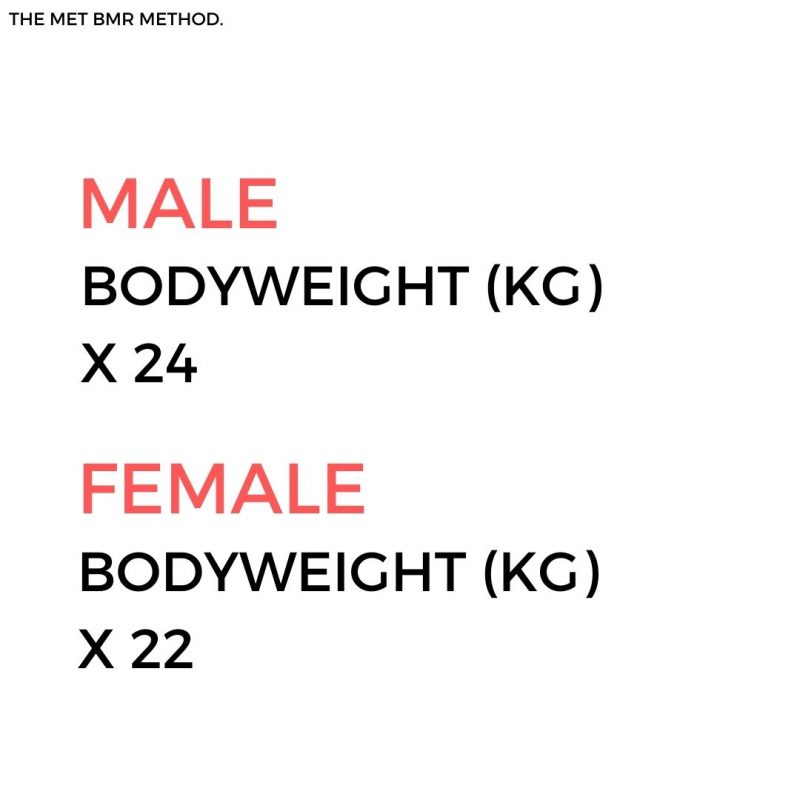
Apply An Activity Factor.
We are going to use the MET BMR Method which is your body weight in kilos multiplied by 24 if you are male, or 22 if you are female.
If I use an 80 kg male here then it works out at 80 x 24 = 1,920 calories.
If I use a 60 kg female then it works out at 60 x 22 = 1,320 calories.
You must apply an activity level on top of this to get your final total. Let’s have a look at physical activity level, or PAL chart.
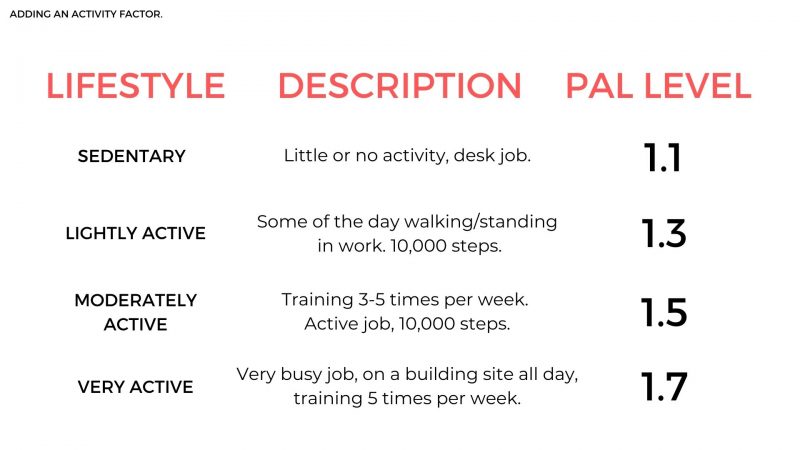
People will always overestimate their activity level.
I use 1.5 as the modifier for my own goals and I am quite active – I get 10,000 steps in per day at least and I train 5-6 times a week with 1 hour + sessions. I feel like I really am 1.6, but I aim conservatively here. You should too.
I encourage my active clients who get 10,000 steps in and train 3-4 times per week to use 1.3, and anything less than 10,000 steps and under 3 sessions is 1.2.
Someone who is completely sedentary in their job and outside work is 1.1.
Going back to the examples the male client clocked in at 1,920 and he meets the criteria for 1.5 on the PAL chart.
1,920 x 1.5 = 2,880 calories.
The female client only qualifies for a 1.2 PAL multiplier.
1,320 x 1.2 = 1,584 calories.
These numbers are what the client must take in daily to MAINTAIN their weight and you MUST keep up your level of activity over time for it to stay that way.
Something that should be apparent is the gap between male and female clients, and that eating the same portion sizes as their partner is where smaller, female clients can run into trouble with weight gain.
Too much energy coming in = your weight goes up. It is just an unfortunate fact but in general males do have a greater calorie expenditure than females.
Applying A Calorie Deficit.
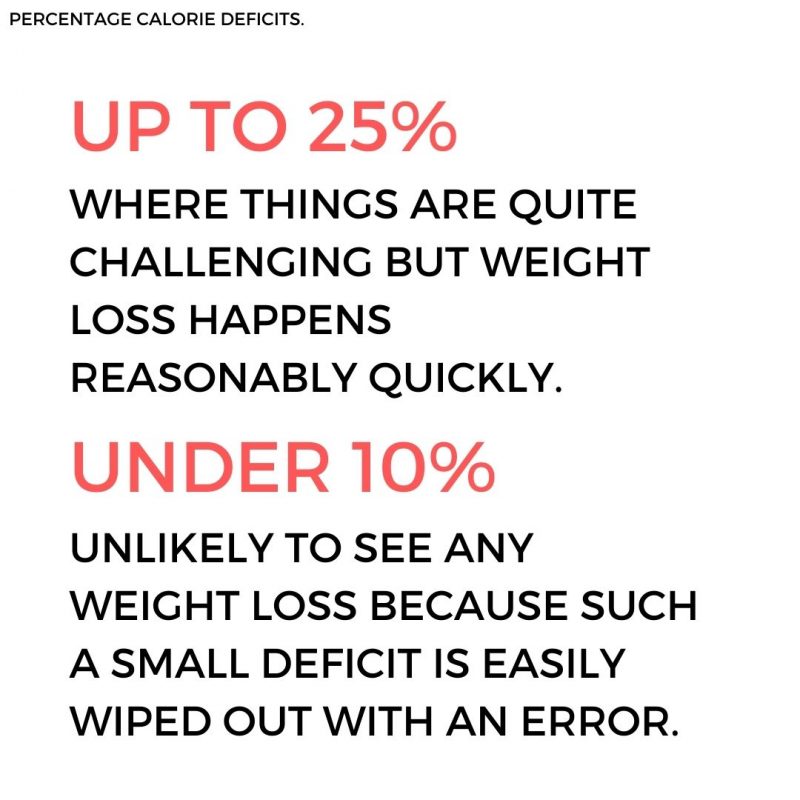
It’s important to go through this again – people usually go wrong when dieting by trying something extreme thinking that results happen fast with fat loss.
Results do not happen fast because of human physiology – you really need to understand that. We have evolved as a species and this is how the human body works – energy balance dictates weight. It is influenced by many things, but it’s the first thing you need to look at trying to control your weight.
When applying a deficit in my experience the extreme end is 20%-25% of your daily calorie intake, beyond that things are VERY difficult to stick to.
The example of the male client would be 2,880 x .25 = 720 calories.
2,880 – 720 = 2,160.
This would be on the brink of what is sustainable for someone. What you need to remember is that this client's activity level is reasonably high. Taking a big chunk of energy away every day does impact this. It's tough to keep training hard and staying active.
The example of the female client would be 1,584 x .2 = 316 calories.
1584 – 316 = 1,268 calories – let’s call it 1,250 calories.
Again, this is tricky to manage over the course of a day – it’s not a lot of food if you make bad choices.
It is incredibly important that you commit a period of time to sticking to this. Fat loss takes a continuous effort of constantly staying in that deficit, anything else and you are just stalling - if not completely stopping - any progress. This is another HUGE area where people go completely wrong.
8/10/12 weeks. Commit a period of time where you can stick to you deficit and you WILL make progress if you stick to it.
I WOULD GO WITH A 20% CALORIE DEFICIT.
This isn't necessarily the case every single time for every person, but it is a great one to try starting out. It's big enough that you'll see results pretty quickly if you're accurate.
Work out your calories and get back me to with the figure, I will often adjust things as each client has individual goals and circumstances.
Macronutrients.
Protein.
Protein keeps you feeling fuller for longer and directly supports the growth and retention of muscle tissue, it also play an important role in recovery so you need an adequate amount per day if you want to change your body composition and look your best. We'll go into more detail as we move through the course.
For now, realise this will most likely be a higher amount per day than you're used to. This will change, you'll eventually get very used to it.
The optimal range for us is 1.6 – 2.0 grams per kg of bodyweight.
For the male client this works out at 80 x 1.6 – 2.0 = 128 – 160 grams of protein per day.
For the female client this works out to 60 x 1.6 – 2.0 = 90 – 120 grams of protein per day.
You end up with a range to work in so you're not overly focused on a single number. People generally eat slightly different foods day to day so just try and fall within the range but aiming for the higher end.
For the purpose of setting yourself up on MyFitnesspal pick a number closer to the middle/higher end.
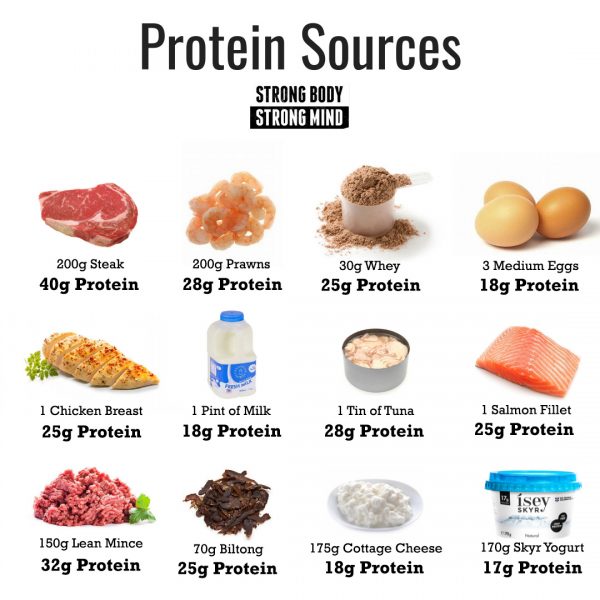
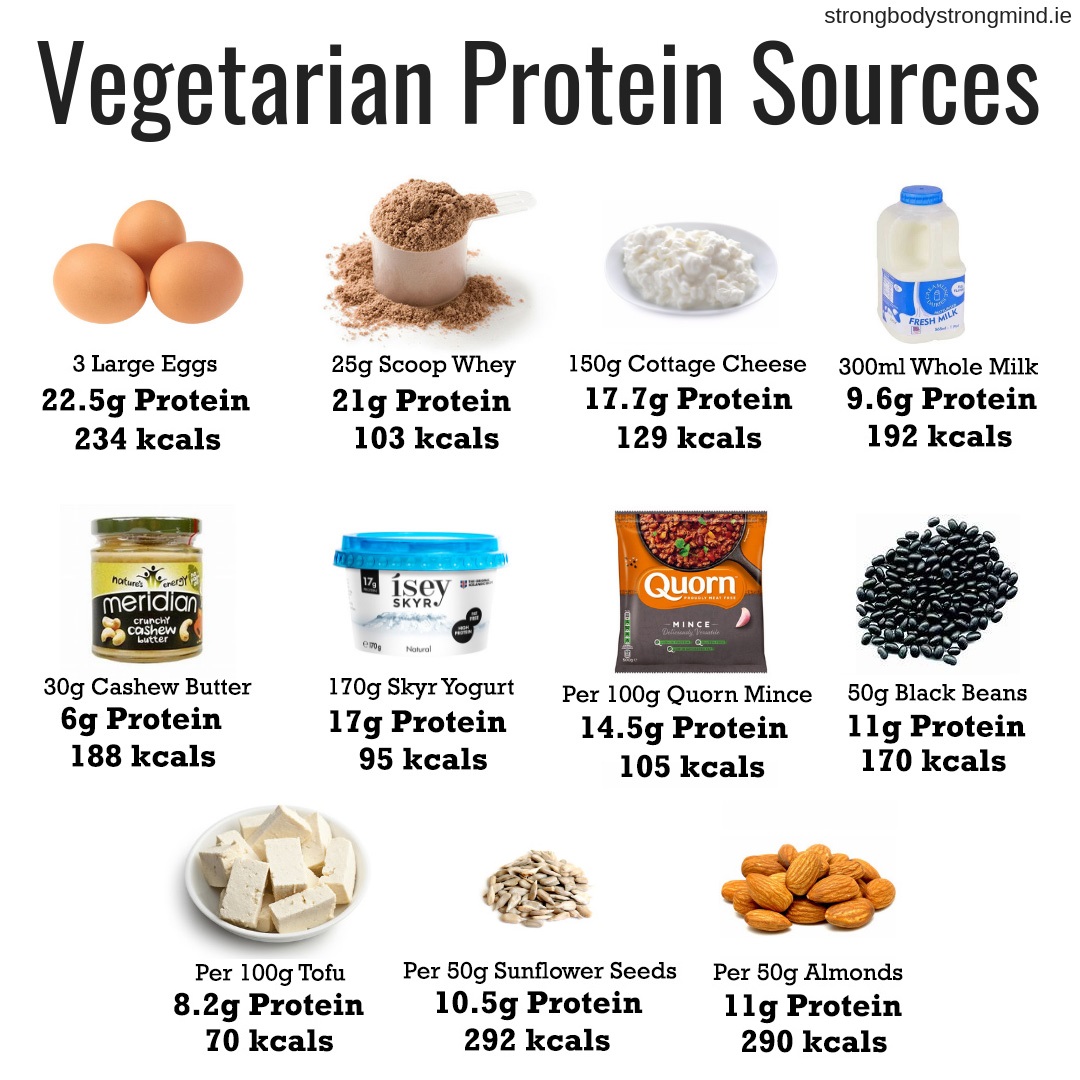
Fat.
Fats are essential nutrients for health and this is why we work them out first. Protein and fat are both needed to survive, and need to be obtained through dietary sources. Carbohydrate is not an essential nutrient.
I prescribe 30% of total daily calories designated to fat, but you can choose something different if it suits you. The lowest end of the threshold is 25% and anything under that can compromise health and well-being.
The example for the male client is 2,160 x .3 = 648 calories. Fat is 9 calories per gram so 648/9 = 72 grams. The male client aims for around 70-75 grams of fat along with the protein target.
The example for the female client is 1,250 x .3 = 375 calories. Fat is 9 calories per gram so 375/9 = 41 grams. The female client aims for around 40-45 grams of fat along with the protein target.
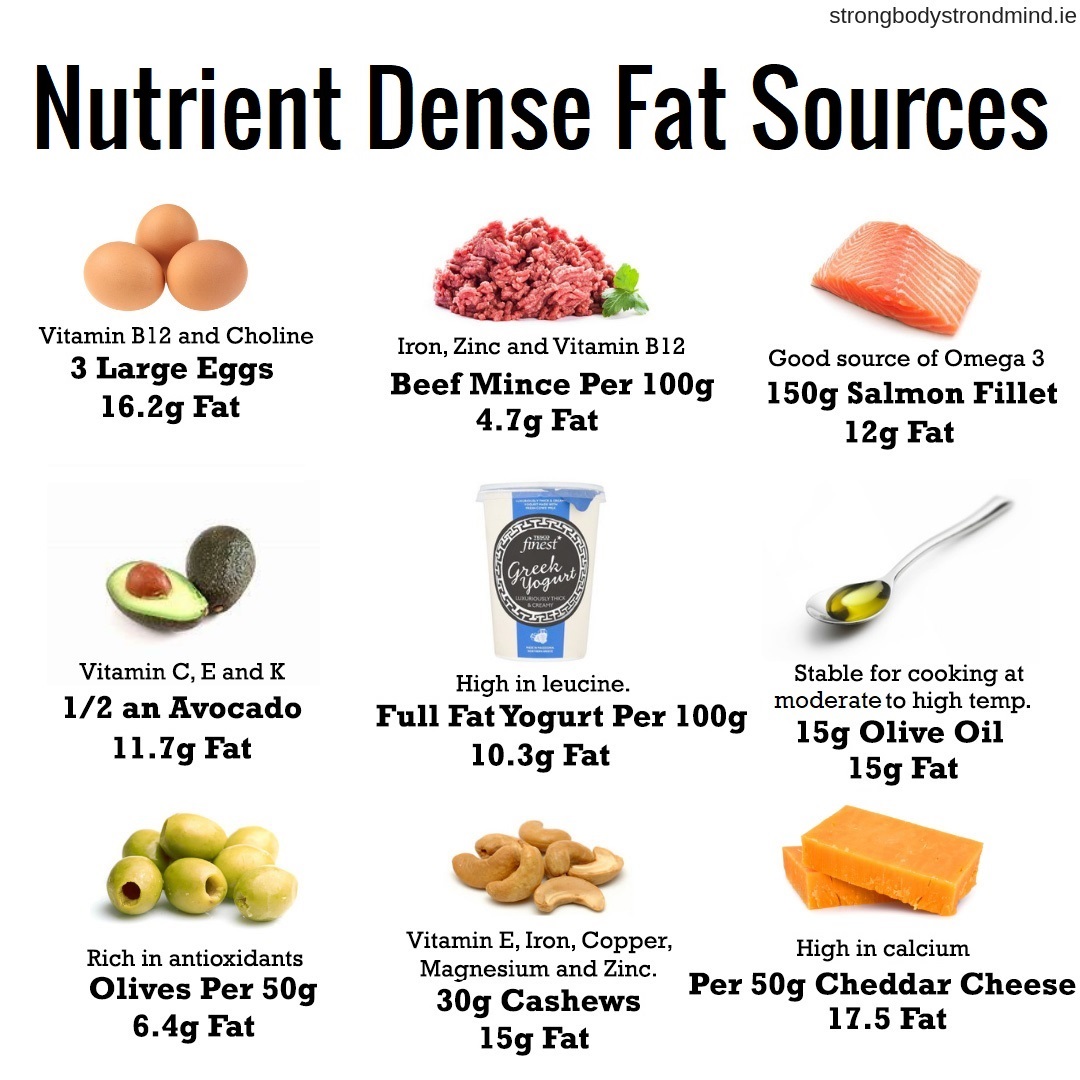
Carbohydrate.
The remaining calories are designated to carbohydrate.
If the male client got 160 grams of protein in, 70 grams of fat then it looks like this;
160 x 4 calories per gram of protein = 640 calories.
70 x 9 calories per gram of fat = 630 calories.
640 + 630 = 1,270.
The total calorie intake is 2,160, minus the protein and fat calories of 1,270 = 890 remaining calories.
890/4 (as the energy value of carbohydrate is 4 calories per 1 gram) = 222 grams of carbohydrate.
You've worked your way all down through the article and by now you should have a calorie and macronutrient goal to help you lose weight over a period of weeks. People generally ask about different targets on training days and other ways of setting things up.
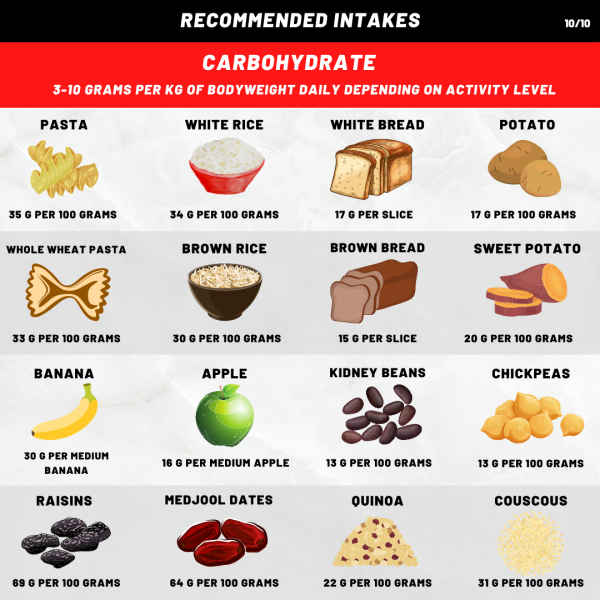
Simplicity is key. Master this first before you look to do anything else.
Now it's a case of figuring out what foods and meals you like that help you reach your goal. This is how you discover a sustainable way to diet, and to maintain your weight when that time comes. You will have received recipe packs when you joined up and they can be a huge help as they easily scan in to Myfitnesspal.
Day to day you will probably eat a mixture of things you already enjoy, some new stuff you haven't tried, and maybe a meal from one of the packs. I'm going to use meals from the pack along with some everyday options you could choose for the male client at 2,160 calories, 160 grams of protein, 220 grams of carbohydrate and 70 gram of fat.
This should help you visual that the numbers are all just food at the end of the day. Click on the recipe to take you to each one.
These Targets Are A Starting Point.
It's important to you fill in your tracking sheet so we can see what actually happens over the course of a few weeks (fat loss isn't an on/off switch). The targets may or may not need to be changed, the only way to find out is to work at them consistently.
Fat loss takes time and patience, keep that in mind.
Speak soon,
Philly
